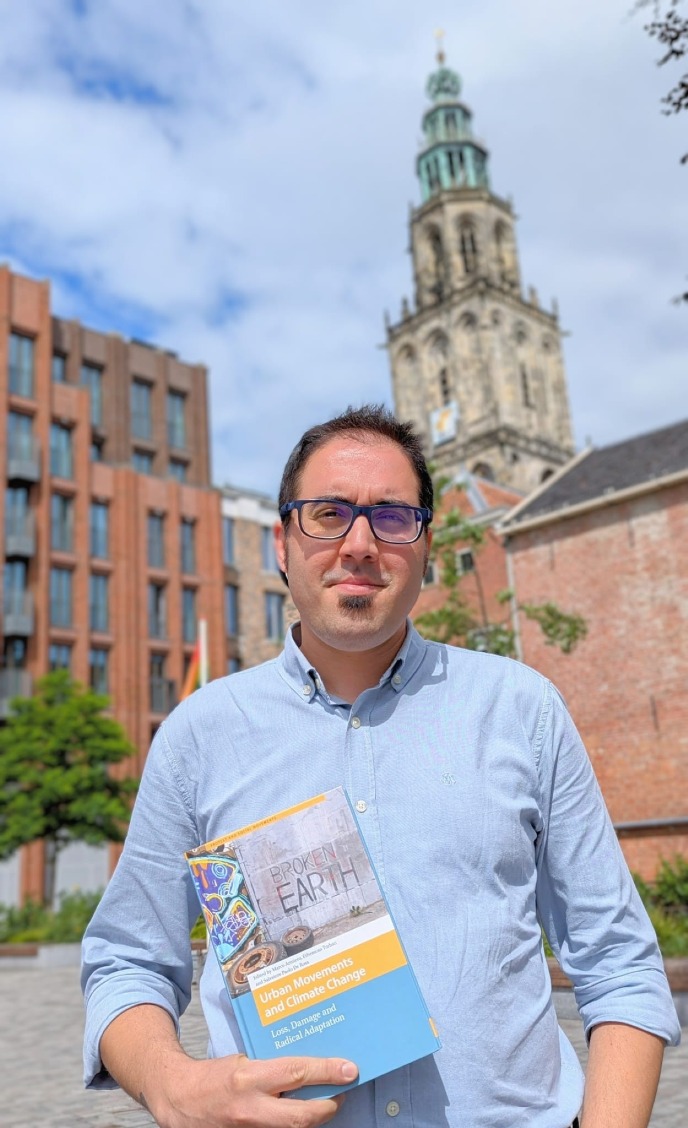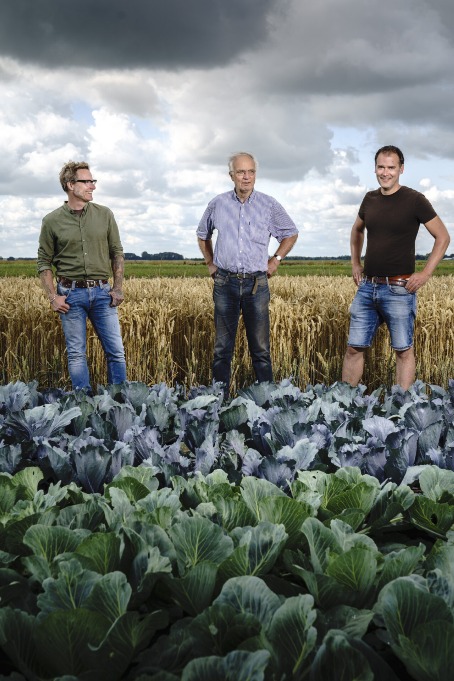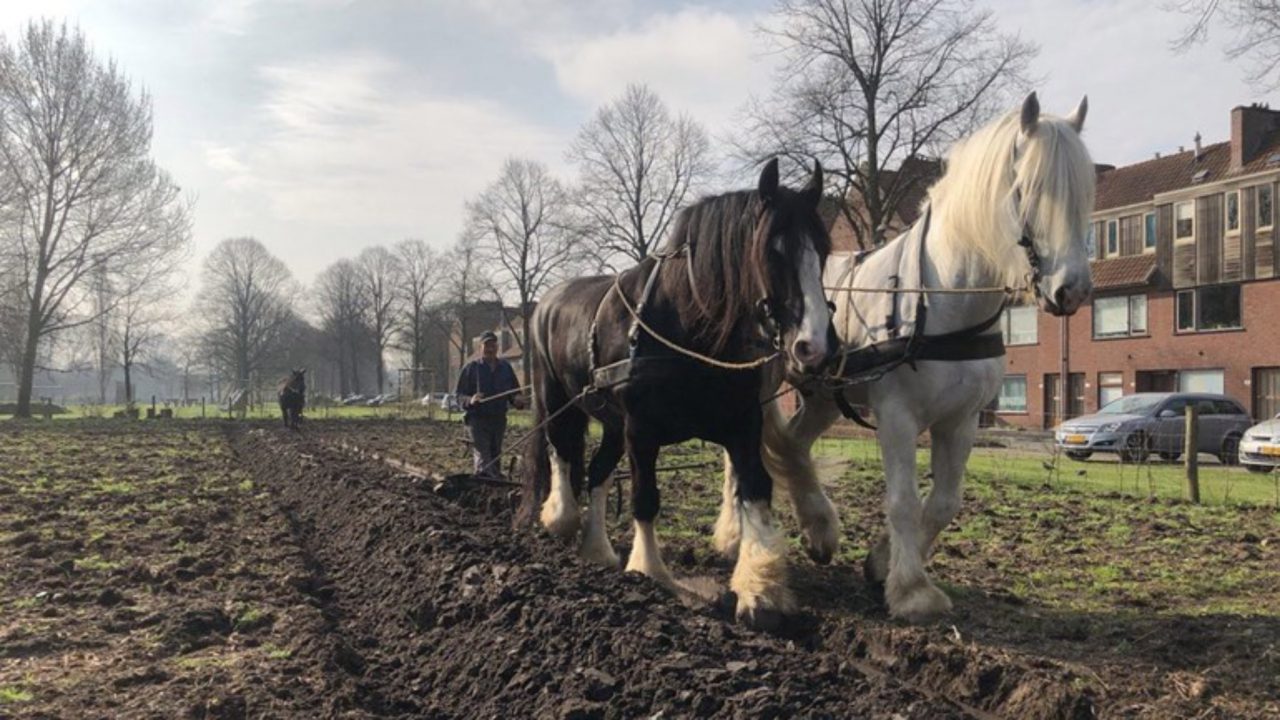Grassroots vs. Green Economy: Why Business Solutions Won’t Fix Climate Change. | Interview with dr. Ethemcan Turhan on his book Urban Movements and Climate Change
The global response to climate change has largely been driven by economic growth-focused models, with business innovations positioned as the primary solutions on a national and global scale. In contrast, grassroots initiatives provide a more sustainable and community-driven alternative, according to dr. Ethemcan Turhan. In the book Urban Movements and Climate Change: Loss, Damage and Radical Adaption (Amsterdam University Press, 2023), he and his co-authors spotlight urban climate movements.

‘Economic growth dependent approaches to climate change are doomed to fail, because they are not necessarily transforming the system. They are just providing patchwork solutions. So they are basically palliative solutions to a chronic problem,’ dr. Ethemcan Turhan tells us.
‘A lot of the talk on climate change is really focused on this idea of green economy and thinking climate change action as an economic growth opportunity. In this book, we make a counter case to that and focus on the role of grassroots innovations as opposed to business Innovations.’
Why a book, when in papers are deemed more important in the scientific community?
The advantage of having a book is to build a consistent argument that covers the entirety of the debate. Our research is conducted by, with and for grassroots environmental movements. We really want to get the widest possible audience for this book. People who are involved in urban climate change movements but also for scientists and practitioners who e.g. work in municipalities, NGOs etc. So, our book is open access and free on the internet for everyone.
What has the book to offer?
The book first provides a framework for understanding what we mean by radical adaptation in urban settings. We explore the role of citizens in the places where they live, work, and play, highlighting how people are already implementing solutions without waiting for global climate negotiations or national policymakers to provide a one-size-fits-all solution. These actions are happening here and now, in everyday spaces— not necessarily in spectacular places and major cities or on a grand scale, but in smaller, less visible communities where change is quietly taking place. We are trying to understand how everyday people in everyday places tackle the impacts of climate change, and offer a perspective on what different people do in different parts of the world.
Can you give me some examples of cases in the book?
The book gives many examples. Naples in southern Italy is well known for its waste problem, illegal toxic waste dumping in the grounds because of mafia activities and for soil pollution due to military facilities of the US Army and NATO bases.
Yet Naples is also known for very strong grassroots movements and urban mobilizations. So, in our book, we focus on the case of The Fratelli De Filippo Park. An abandoned park, which was literally kind of put aside by the municipal administration. Ignored until citizens took control of it and transformed it in a way that today it acts as an urban green space managed by the community for the community. The park is used for urban agriculture but at the same time it functions as a climate shelter to protect residents from heatwaves. Naples is on the coast of the Mediterranean is one of the hot spots of climate vulnerability.
Another example is the social uprising in Chile in 2019, sparked because of a fair hike for public transport in an increasingly car dependent urban development. A rise in the prices of public transport triggered social mobilization that spread over like wildfire. Now there is a new - left wing - government after the social uprising that does pay attention to the woes of this communities. I don't think it is a coincidence that today in Chile they have as the minister of environment a climate scientist and an IPCC author who worked on climate change vulnerabilities for a very long time: Dr. Maisa Rojas Corradi.
Around the world, we have urban mobilizations that call for justice, fair, and sustainable responses to climate impacts in cities. That is really pushing climate change from the fringes of political spectrum really to the center, into the local, regional and national policy agendas.
One of the critiques often heard, is that business points at the consumers - individuals - to take action, just to escape their own responsibility. But for individual consumer it seems difficult to change things.
We don't necessarily focus on individual lifestyle actions in the book. I mean, you can take care about your carbon footprint. You can reduce your consumption. Those are all good things, but in a structural sense they will not cause any major change. On the other hand, putting the sole focus on international negotiations and nation states as a tool is not a good thing either. Same applies to approaches that solely focus on change within for-profit businesses.
In the book, we suggest that there is a need to shift from the logic of business innovations. Business innovations are all about copyrights, about intellectual property rights, and about specialized exclusive knowledge. There are experts ‘who know everything.’ It's all about marketability, about money; you get your patent, and then you sell it and you make a fortune out of it. They are universal, at least in principle, so business innovations are one-size-fits-all. These techno-fixes are sold all around the world regardless of the context.
Grassroots innovations and knowledge are, however, completely different. First and foremost, they are not about secrecy or profit-motive. Grassroots innovation is about openness. In order to foster social innovation knowledge must be openly available. Secondly, grassroots innovations need to be interdisciplinary because grassroots innovations are non-specialized knowledge. And this non-specialized knowledge doesn't only come from people who may be interested about a topic, say climate action but it also comes from different segments of the society. It comes from indigenous peoples, it comes from migrants who hold very valuable knowledge from the places they come from. It comes from elderly people who spent a long time in a specific place, they know the patterns of change. Hence, grassroot innovation is not only about engineers, planners and technical folks who have the ‘scientific’ knowledge, but it is about being open to different sources of knowledge and wisdom. It is not about marketability, it is about gratuity, collective well-being and solidarity.
Grassroots in Action: From Urban Movements to Toentje. A reaction by Jos Meijers
In 'Urban Movements and Climate Change', Dr. Ethemcan Turhan brings together numerous inspiring examples of grassroots initiatives. From Naples to Santiago, citizens are taking matters into their own hands to find sustainable solutions to complex societal challenges. One example featured in the book is the Fratelli De Filippo Park in Naples, where residents transformed a neglected park into an urban green space that not only enables food production but also serves as a climate-resilient refuge during heatwaves.

Similar movements can be found in Groningen. Take Toentje, a social enterprise in the Oosterpark neighborhood. Toentje works on food security and poverty alleviation through sustainable, local food production. With its urban garden, Toentje provides thousands of kilos of vegetables and herbs annually to food banks in the north. Beyond greening food chains, Toentje fulfills an important social role, where volunteers and staff work together towards a shared goal.
Jos Meijers, founder of Toentje, sees parallels with the initiatives in Turhan's book but also highlights a key difference: collaboration with the local government. ‘Unlike in Naples, we have a social government here that works with us. That makes a big difference,’ says Meijers. This collaboration has resulted in a wide range of projects, such as the neighborhood restaurant Bie de Buuf (At the neighbours) and Soep op de Stoep (Soup on the sidewalk), an initiative where the local community care team offers soup made with local ingredients while informally addressing care needs among residents. Additionally, there are cooking lessons for neighborhood children. ‘This way, they at least get one warm meal a day.

Meijers continues: ‘Poverty has always existed and probably can never be completely eradicated, but we do everything we can to help people. Food banks already existed, but they are finding it increasingly difficult to put together a healthy package because of their dependence on surplus food from the supply chain. That gave me the idea to grow vegetables myself. With our urban garden, we can now produce around 5,000 kilos of vegetables annually, enough to support about 25 families. We also collaborate with arable farmers in the province, allowing us to supply an additional 30,000 kilos per year. Moreover, we sell honey in collaboration with local beekeepers and grow hops for local city beer.’
According to Turhan, grassroots initiatives are particularly powerful because they are contextual and open-source. Toentje exemplifies this: its model of gardening, cooking, and community building seems simple and replicable, but its unique strength lies in local collaborations and the involvement of a diverse team of volunteers. As Meijers puts it: ‘We also get visitors from all over Europe to see what we do and how we do it. Even university researchers from RUG and WUR are involved. Our strength lies in the diverse composition of our volunteer team—people distanced from the labor market, employed professionals, teachers, students, and more. We work together with the rhythm of nature for one another, and that makes it both tangible and valuable.’

Further reading
Urban Movements and Climate Change. Loss, Damage and Radical Adaptation. Edited by Marco Armiero, Ethemcan Turhan and Salvatore Paolo De Rosa. Amsterdam University Press, 2023
More news
-
15 September 2025
Successful visit to the UG by Rector of Institut Teknologi Bandung

